Wellsey apple variety
Welsey (Wealthy) refers to the varieties of "American" selection, in Russia it spread by the end of the XIX century. The variety was well studied in Soviet times at the Oryol fruit and berry experimental station and the Michurinsky fruit nursery in the Voronezh region. It is included in the State Register of Zoned Varieties for European regions of Russia. The resistance of this apple tree to disease and cold is the reason for the widespread use of the Welsey variety for breeding purposes. As an initial form, this apple tree was used to create almost three dozen new apple varieties at the Research Institute of Horticulture and Breeding in Moscow, Novosibirsk and the Altai Territory.
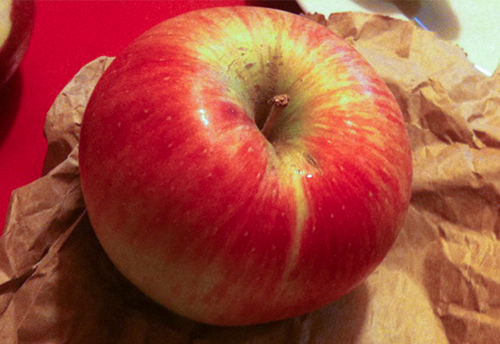
The Welsey variety is popular among amateur gardeners for such qualities as accelerated fruiting (for 4 - 5 years) and high yield (up to 200 kg of fruits per tree). This apple tree is also appreciated for the excellent taste of large beautiful fruits that can be stored for a long time.
Characteristics of varietal characteristics. Welsey belongs to the group of large-fruited winter apple varieties. The fruits of this group are distinguished by good keeping quality and are intended for winter consumption. In terms of the quality of preservation, this variety gives a head start to the widespread Antonovka.
The fruits are suitable for consumption immediately after removal and are perfectly preserved, without losing their taste, during October - January. The variety is distinguished by high consumer quality of apples. The fruit weighs 80 - 150 g. The apples are flat-round in shape, cherry-red at full maturity (60 - 80%), juicy, sweet and sour, with a delicate aroma. Fruit skin is thin, dense, small seed chambers, closed. On a five-point scale, their taste score is 3.9 points.
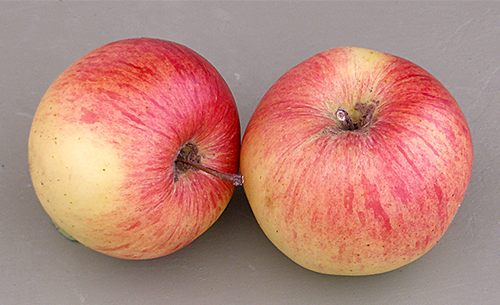
The winter hardiness of the Wellsey apple tree is relatively high. Trees tolerate winter temperatures down to minus 25 ° C, damage is possible at lower temperatures. Winter hardiness of trees also depends on temperature fluctuations in the autumn, the degree of saturation of the soil with moisture and the applied agrotechnical methods. In the northern regions, it is more advisable to grow the variety on a winter-hardy rootstock.
Wellsey is distinguished by its resistance to scab, which is a very valuable quality of the variety and allows it to maintain both yield and commercial quality of fruits even in the wettest years.
The term for picking fruits is usually the second - third decade of September, the ripening of apples is amicable. A delay in collection dates results in significant losses.
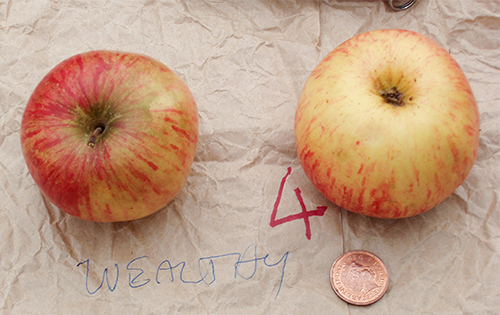
Features of the formation of the crown. Wellsey apple trees are characterized by a medium size, wide pyramidal (at a later age - rounded) crown. This shape of the crown creates conditions for optimal illumination and fouling with fruit branches throughout the volume. The main branches have an upward growth direction at an acute angle, which can lead to their breaking off with a significant yield. Leaves are medium-sized, sparsely located, dark green, shiny. The flowering is friendly, the flowers are medium-sized, white-pink, dense.
When the growth decays, rejuvenating pruning is required. Welsey belongs to the group of apple trees characterized by a lateral fruiting nature (usually on growths of the vegetative type of the current year). This is a characteristic feature of large-fruited varieties, the origin of which is associated with Siberian species of wild apple. Since Welsey is distinguished by abundant fruiting, it is necessary to avoid overloading the tree with fruits, as this leads to weakening of trees, freezing of trunks and deterioration of fruit quality.
As the tree ages, the nature of fruiting changes. This usually manifests itself in the transition to the annular type of fruiting. This explains the often increasing tendency of trees to manifest a periodic type of fruiting with age. Rejuvenating pruning extends the fruiting capacity of the fruit formations typical of the variety.
Growing areas.The Welsey apple tree is one of the zoned varieties of fruit crops recommended for industrial and amateur orchards, along with old Russian varieties such as Cinnamon or Antonovka ordinary.
The variety is distinguished by a rather significant distribution area in the European part of Russia. The most favorable growing areas are the Central Black Sea zone, Bryansk, Oryol, Pskov, Tula regions of the Non-Chernozem zone. This apple variety is successfully grown by amateur gardeners in the central and even northwestern regions of the Non-Black Earth Zone. The variety grows well in the Baltic countries, with low winter temperatures and where its resistance to scab disease is highly valued. Thanks to the use of the Welsey apple tree for breeding purposes, it appeared in amateur gardens in the southern regions of Siberia and the Altai Territory.
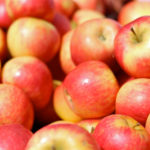
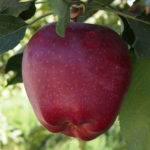
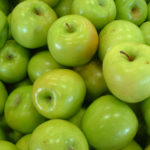
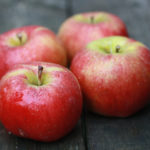
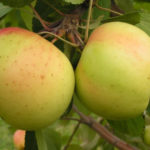
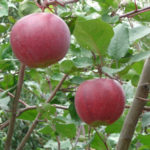



Solnechnogorsk district, Lunevo. A wonderful variety, apples are juicy and sweet, with a delicate skin, this year an excellent harvest, delight !!!
Moscow region Chekhov district. An excellent variety, there used to be such an apple tree, but it disappeared during transplantation, they specially looked for the same variety, this year it gave a crop for the first time (4-year-old) - 9 pieces of rather large and red (fabulous) apples! But that's not all - they have a scent - Roses!
Lovely apple tree. The apples are delicious and can be stored until May. Last summer the hurricane broke a couple of branches, now I will plant another tree. Now I read that it is resistant to scab - and it's true, apples have been clean all the years ...
Great variety! On my site (south of the Moscow region), this apple tree regularly and abundantly bears fruit, although it is planted in a rather shady place. The fruits are large, very juicy, good taste. Disease resistant.
Planted in a country house in the Vladimir region. Fruiting in a year, like all apple trees in the area. Beautiful. A wonderful harvest this year. Apples smell very good. The apples are delicious and beautiful.
Nizhny Novgorod region, Mikhail.
Hello people. Please read my question, or rather a story. We have an apple tree growing in our garden, all our lives we called it "WALES" and all our neighbors, relatives, too. Now it has grown so much that the tree has become, frankly, big. Earlier, in the 90s, I remember, when she was young, the apples on her were larger than they are now. Well it is clear.
[Description of apples: Fruits ripen at the end of September, or even faster. I tried something to my liking - similar ones grow with relatives in the village, but still not that. My friends are surprised - they have not tried anything like this, they say. Neighbors just adore them too, when they start to fall over the fence towards them when they are ripe. In short, there are definitely no such people nearby. There are apples with a similar taste, but this is only at the beginning; then, by the end of summer, they fully ripen and then become soft. But these are nothing of the kind: it's already cold, and they will be tough, sweet and sour. They went over to Antonovka. In short, these apples are sweet and sour with a very contrasting taste. When fully ripe, the color can go almost to the eggplant color; very dark, medium size, not small, twenty years ago they were larger, of course. The peel is quite thick, like smeared with wax, there seem to be few stripes, there are dots, the apple itself is heavy, very, very dense, probably denser than Antonovka. I say, if you tried some Pepin or Anis after him, you would vomit, but these apples ripen much faster than mine.]
So, from this year 2017, I decided to plant in full all the rest of the empty space on our site, mainly with apple trees, because there are already few of them left (a couple of years ago, Naliv and Pepin broke by a hurricane, plus Borovinka was still and Giant Streyfling (in terms of the tree itself, I mean; no one has seen such mighty trees), but it had to be cut down the same way.That's when I started to be interested in apple varieties this year, first of all I wanted to definitely find here the same sort as ours, supposedly this “WALES.” But this sort, it turns out, is not in the names; there is a sort of “WELSEY.” Then I began to remember that once someone told us a long time ago that you name these apples incorrectly, well, what difference does it make to us, they are okay. But that's not the point. When I started looking for the characteristics of the "WELSIE" apple tree (I looked at the photos, read all sorts of descriptions there), it seemed to me that this we do not have "WELSIE" at all. Our apple tree is more suitable for the description and photo of the apple tree "LOBO" - here with her right Moe almost exactly matches. To be on the safe side, I planted both "LOBO" and "WELSIE" - both three-year-old saplings. I didn't go to the nursery myself, but found the sale of these trees in April; in short, the seller himself has his own nursery; please come, look, we'll tell you everything, we've been doing this for 20 years already; and if not to the nursery, then come to a special site (exhibition), where they trade during the season. I came there. There, of course, they have so many things. Well, in addition to these, I also bought all sorts of crops there. By the way, regarding the correctness of the variety - everything is strictly monitored (guarantees, consultations, competition); in general, I'm 99% sure that this particular variety was picked. So, I planted them, fertilizers there, everything. Both seedlings have taken root very well (they are handsome). But what to do? Suddenly they will not be like my apple tree. I decided - it will be necessary to graft a branch from my apple tree in the fall, otherwise the tree will dry out soon, anything can happen. Or there is one trick: you take it in the summer, even cut off the bark from a small branch and fill this place with earth (hang up a plastic bottle filled with earth) and during the summer-autumn it can give roots, (or it may not give it - then it will be very bad) and then you cut it off, and into the ground with roots, and into the basement or something, somewhere there for the winter (you need to find out in more detail), here, and plant it in the spring. But in fact, it may not be all that simple. I will try what to do. I want to preserve, it is imperative to revive this variety. Now it's July, in September I'll post a photo of these apples (apple tree), now it's not clear yet. Here, otherwise it is already big, it needs to be filed - at the top the branches no longer look good. Will die - so what, at least there will be the same tree from this apple tree, a grafted branch. You can, of course, somehow rejuvenate it, but all the same it has already grown old and roots, and all that. I will file in the fall, so that the young grow out of the knots.
In short, the point is that I do not know what this variety is called and no one knows. Grandfather planted and planted sometime in the 70s or 80s, probably. He knew.
If anyone has any ideas about the characteristics of this sort, please write, otherwise, maybe there were no names among the people before.
Michael, good afternoon! A very interesting and detailed story. So in the end, did you find out the name of your variety?
He thought that you would suggest the name of the apple tree.
I ordered "Wellsey Winter" in the Chelyabinsk nursery, as a result, the apple tree was the earliest in the garden.
It looks like a deception, although the apples are delicious, they are not stored at all!
Once and no.
Intrigued ... and?